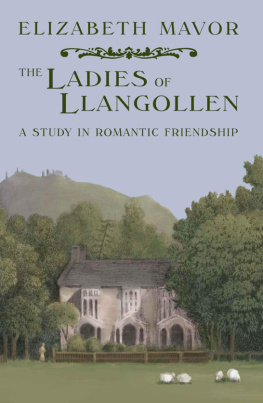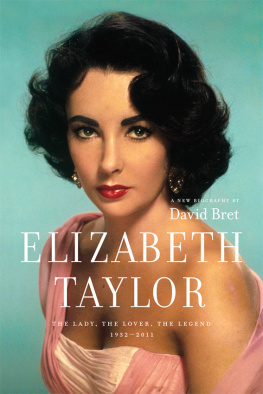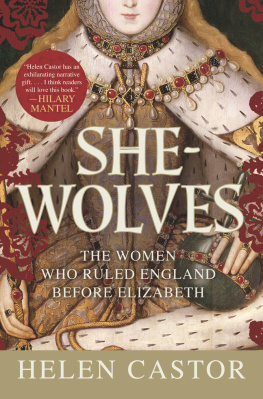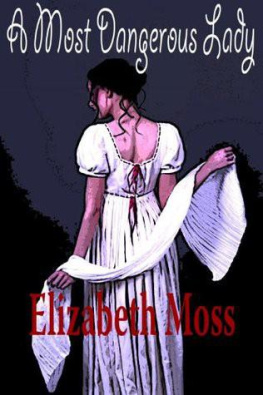For E.M.P. best of all godmothers
Introduction
There occurred in the summer of 1774 a minor literary tragedy. On the 5th of July Dr Johnson in company with Mrs Thrale and her daughter set out on a tour of North Wales. On his return home two months later he passed by Llangollen just four years too early to meet the celebrated Ladies.
Had he done so he might have retained a stronger impression than that Wales offered nothing to the speculation of the traveller. Eleanor Butler and Sarah Ponsonby, two aristocratic spinsters of thirty-nine and twenty-three respectively, were to provide future Welsh travellers with food for speculation over the next fifty years.
Mrs Piozzi, coming to know them herself, would call them enchantresses, Lady Louisa Stuart, never meeting them but by hearsay, would unkindly dub them of the genus mountebankum, Prince Puckler Muskau would write of them as the two most celebrated virgins in Europe! In 1782 only two years after taking up house together people were confessing themselves captivated by their romantic mode of life, and three years later their fame had travelled so widely that the Queen was asking for plans of the cottage and garden. This was only the prelude to an adulation accorded to few celebrities in any era, and it was to last until their deaths and after. Their visitors and admirers, though the terms were not always synonymous, were to number nearly everyone of note throughout the period, and while a detailed list would be tedious, it should be recorded that it comprised not only royalty but soldiers, inventors, philanthropists, actors, artists, men of letters and poets. The Duke of Wellington was a cherished friend, Wordsworth and Southey composed beneath their roof, Josiah Wedgwood lectured them upon rock formations, Dr. Darwin and Charles visited them, as did Sir Walter Scott, the Miss Berrys, Sheridan, Lady Caroline Lamb and Sir Humphrey Davy to mention but a few.
What was the cause of such celebrity? For the two women were neither artists nor writers as has often been supposed, though many admired Sarah Ponsonbys beautiful calligraphy and exquisitely careful illuminations and all enjoyed Eleanor Butlers animated conversation, that unaccountable knowledgeof all living books and people and things, which to Mrs Piozzi had been like magic. For some fascination lay in the strangely picturesque charms of their garden, for others in the gothick witticisms of the cottage, to all the life of the two women represented a perfect picture of that retirement which had become the ideal of an age too long given over to the stridency of the world. Although DrJohnson had mocked retirement in Rasselas and in 1783 had criticized it as Civil suicide he was by then running counter to the thought of the age, for the notion of a dignified withdrawal from the press and vulgarity of the world to a life of virtue and rustic simplicity had already become fashionable.
Inspired anew by Rousseau, but finding its source far back in the Roman poets, the delights of retirement had already been hymned in the works of Pope, Thomson and Gray. Practitioners of this way of life numbered such celebrities as Lady Mary Wortley Montagu, Shenstone and Cowper, not to mention poor foolish Marie Antoinette; and it would not be long before even Hannah More, that pillar of common sense, would remove to her own sweet retirement at Cowslip Green, and a whole generation of not so sensible poets would forsake the metropolis for the rigours of life in lakeland cottages.
But it was not only as exemplifiers of a perfect retirement that the Ladies were celebrated, but as perfect friends.
For friendship, as a contemporary had it, could then be adivine and spiritual relation of minds, an union of souls, a marriage of hearts, a harmony of designs and affections, which being entered into by mutual consent, groweth up into the purest kindness and most endearing love, maintaining itself by the openest freedom, the warmest sympathy, and the closest secrecy.
In a word, the two womens relationship was what we in modern terms would consider a marriage. It was to give rise to their own unique and much envied way of life, for did it not combine rural innocence and simplicity without lack of comfort and culture; freedom from unbridled passion with no loss of pleasure, a balanced reconciliation between the tiresome polarities of existence?
Yet, for the purposes of studying and portraying a friendship so subtle and so rare, the obvious Freudian interpretation seemed a bluntish instrument, one at once oversimplified and too prone in its operation to give rise to that false Duessa of categorization which now obscures too much of individuality and interest. Consequently, although an enterprising contributor to The Times Literary Supplement has usefully distinguished between the homo-erotic and the homo-sexual, I have nevertheless chosen to portray the relationship between the two women in other terms than Freuds. I have preferred the terms of romantic friendship (a once flourishing but now lost relationship) as more liberal and inclusive and better suited to the diffuse feminine nature. Edenic it seems such friendships could be before they were biologically and thus prejudicially defined. Depending as they did upon time and leisure, they were aristocratic, they were idealistic, blissfully free, allowing for a dimension of sympathy between women that would not now be possible outside an avowedly lesbian connection. Indeed, much that we would now associate solely with a sexual attachment was contained in romantic friendship: tenderness, loyalty, sensibility, shared beds, shared tastes, coquetry, even passion.
Eleanor Butlers and Sarah Ponsonbys friendship was of this kind, and it was to be celebrated for over half a century in their journals, day-books and letters; it was celebrated above all in the journals of Eleanor Butler, though it was those of her more retiring friend that Colette had been so eager to get a glimpse of. They, alas, are lost, with the exception of her day-book for 1785 and her account of their first tour of North Wales in 1778 which she dedicated to Her most tenderly Beloved Companion. Of other journals that she may have written only one is mentioned in her letters, one written for the information and, one suspects, the edification of her methodistical cousin, Mrs Tighe. A loss, in view of that ladys restricted view of life, perhaps not so very great after all.
Of Eleanor Butlers journals, uninhibited, amusing, written for themselves (though occasionally the privileged were permitted to hear extracts), but nine remain. They consist of a Ladys Pocket Book for 1784 ; a complete journal for January to December 1785 ; a journal from January 1788 to January 1791 in ten bound parts; an incomplete journal for 1791 and another for only May and June of 1799; one for 1 January to 28 March 1802, and another for 4 August to 31 December 1807. There is a complete journal for 1819 and part of a journal for January to July 1821. There is a day-book for 1806. Extracts from all these, with the exception of the pocket book for 1784, the day-book for 1806 and the journal for 1819, were published in The Hamwood Papers of the Ladies of Llangollen and Caroline Hamilton in 1930.
The journal for 1785 is in the possession of Lady Eleanor Butlers kinsman, the Marquis of Ormonde, and I must thank him for his true kindness in entrusting me with that precious possession, and also for his and the late Lady Ormondes kind hospitality.











